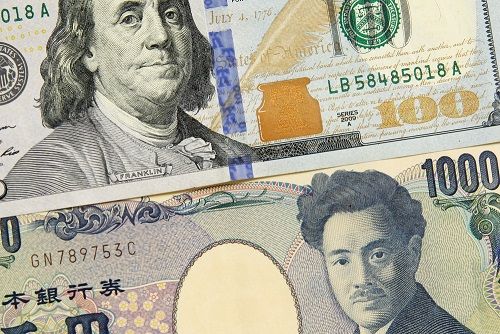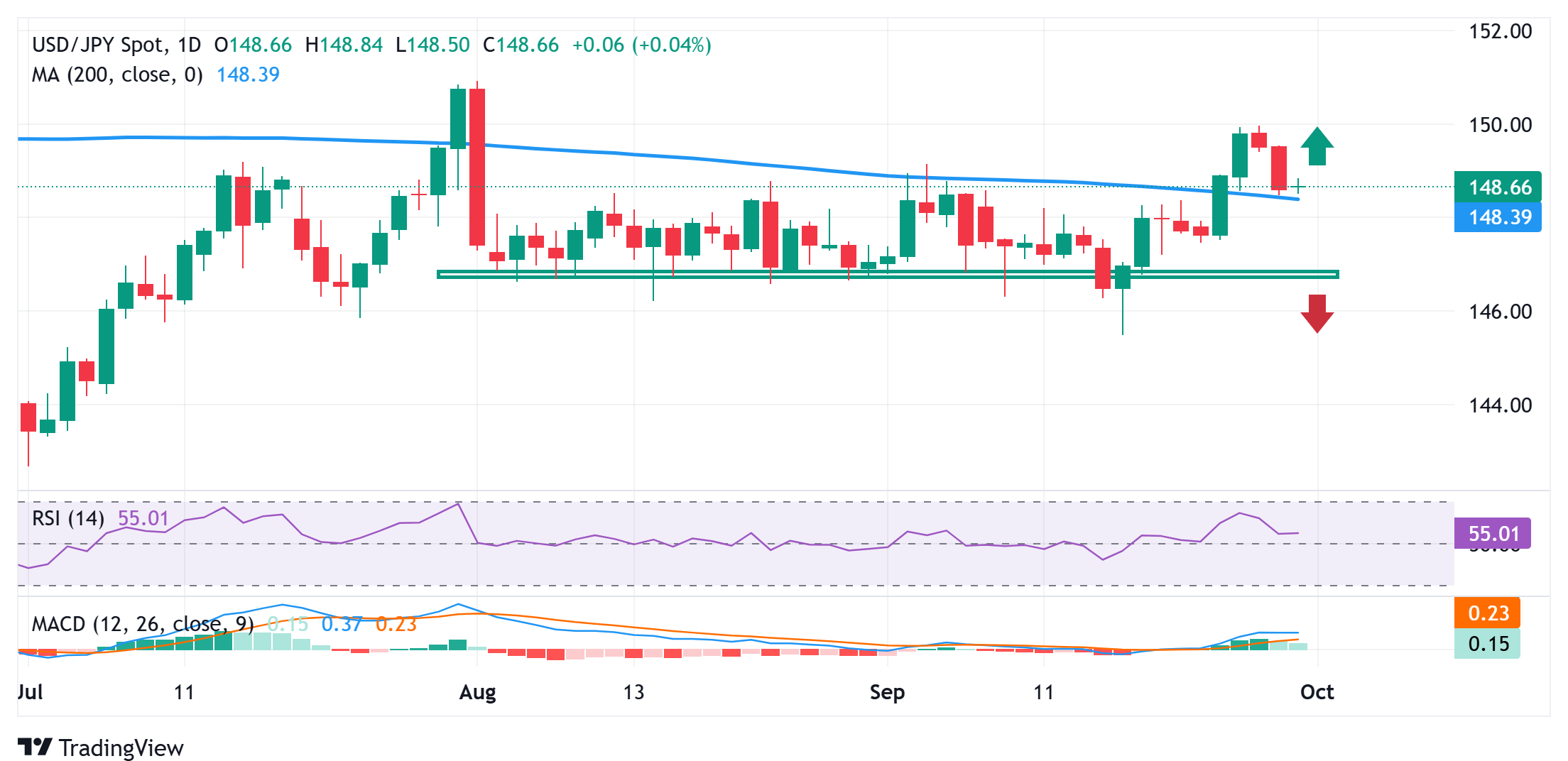
The Japanese Yen attracts fresh sellers in reaction to a divided BoJ Summary of Opinions.
Disappointing macro data and a positive risk tone also undermine the safe-haven JPY.
The divergent BoJ-Fed policy expectations should limit losses for the lower-yielding JPY.
The Japanese Yen (JPY) edged lower during the Asian session on Tuesday after the Bank of Japan (BoJ) Summary of Opinions indicated a divided board over the need for an immediate policy tightening. Moreover, the disappointing release of Industrial Production data and Retail Sales figures from Japan, along with the underlying bullish tone across the global financial markets and trade uncertainties, undermine the safe-haven JPY. Adding to this, a modest US Dollar (USD) uptick assists the USD/JPY pair to gain some positive traction and stall its recent retracement slide from the vicinity of the 150.00 psychological mark, or its highest level since early August, touched last Friday.
Traders, however, seem convinced that the BoJ will stick to its policy normalization path and are still pricing in the possibility of a rate hike in October. This marks a significant divergence in comparison to bets that the US Federal Reserve (Fed) will lower borrowing costs twice by the end of this year, which should limit deeper losses for the lower-yielding JPY. Meanwhile, dovish Fed expectations, along with the risk of a potential US government shutdown, might keep a lid on any meaningful appreciation for the USD and the USD/JPY pair. This warrants caution before positioning for the resumption of the pair's recovery from the lowest level since July 7 touched earlier this month.
Japanese Yen is pressured by BoJ rate hike uncertainty and weaker domestic data
The Bank of Japan's Summary of Opinions from the September meeting, released earlier this Tuesday, showed increasing pressure from hawks to normalise policy. That said, dovish policymakers highlighted uncertainty over inflation dynamics and global grade uncertainties.
On the economic data front, Retail Sales in Japan fell 1.1% year-on-year in August, marking their first decline since Feb 2022 and the biggest fall since August 2021. Moreover, the reading was well below market expectations of a 1% rise and a 0.4% rise recorded in the previous month.
A separate government report showed that Japan's Industrial Production declined for the second consecutive month, by 1.2% in August compared to consensus estimates for a 0.7% contraction. The data suggested that businesses remained cautious amid persistent concerns about US tariffs.
In the latest trade-related developments, the White House announced early Tuesday that US President Donald Trump signed a proclamation adjusting imports of timber, lumber, and derivative products into the US. Meanwhile, imports from the European Union and Japan were capped at 15%.
Adding to this, domestic political uncertainty continues to fuel speculations that the BoJ will delay raising interest rates further, which fails to assist the Japanese Yen to build on a two-day-old move up against the US Dollar. Any meaningful depreciating move for the JPY, however, seems elusive.
Traders are still pricing in the possibility of a 25-basis-point rate hike by the BoJ in October. In contrast, the Federal Reserve is expected to cut rates twice by the year-end. The latter should cap the USD amid the looming US government shutdown and offer support to the lower-yielding JPY.
USD/JPY bulls have the upper hand while above the 200-day SMA near 148.40

The USD/JPY pair finds some support and defends a technically significant 200-day Simple Moving Average (SMA). Adding to this, oscillators on the daily chart – though they have been losing traction – are holding in positive territory. This, in turn, favors bullish traders and backs the case for additional gains. Any further move up, however, is likely to confront a hurdle near the 149.00 mark. A sustained strength beyond will reaffirm the positive outlook and allow spot prices to make a fresh attempt to conquer the 150.00 psychological mark with some intermediate resistance near the 149.40-149.45 region.
On the flip side, weakness below the 200-day SMA, currently pegged near the 148.40 region, could pave the way for a slide towards the 148.00 round figure. Some follow-through selling will negate any near-term positive bias and make the USD/JPY pair vulnerable to accelerate the slide towards the 147.50 region en route to the 147.20-147.15 zone. This is followed by the 147.00 mark, which, if broken decisively, might shift the near-term bias in favor of bearish traders.
* The content presented above, whether from a third party or not, is considered as general advice only. This article should not be construed as containing investment advice, investment recommendations, an offer of or solicitation for any transactions in financial instruments.


